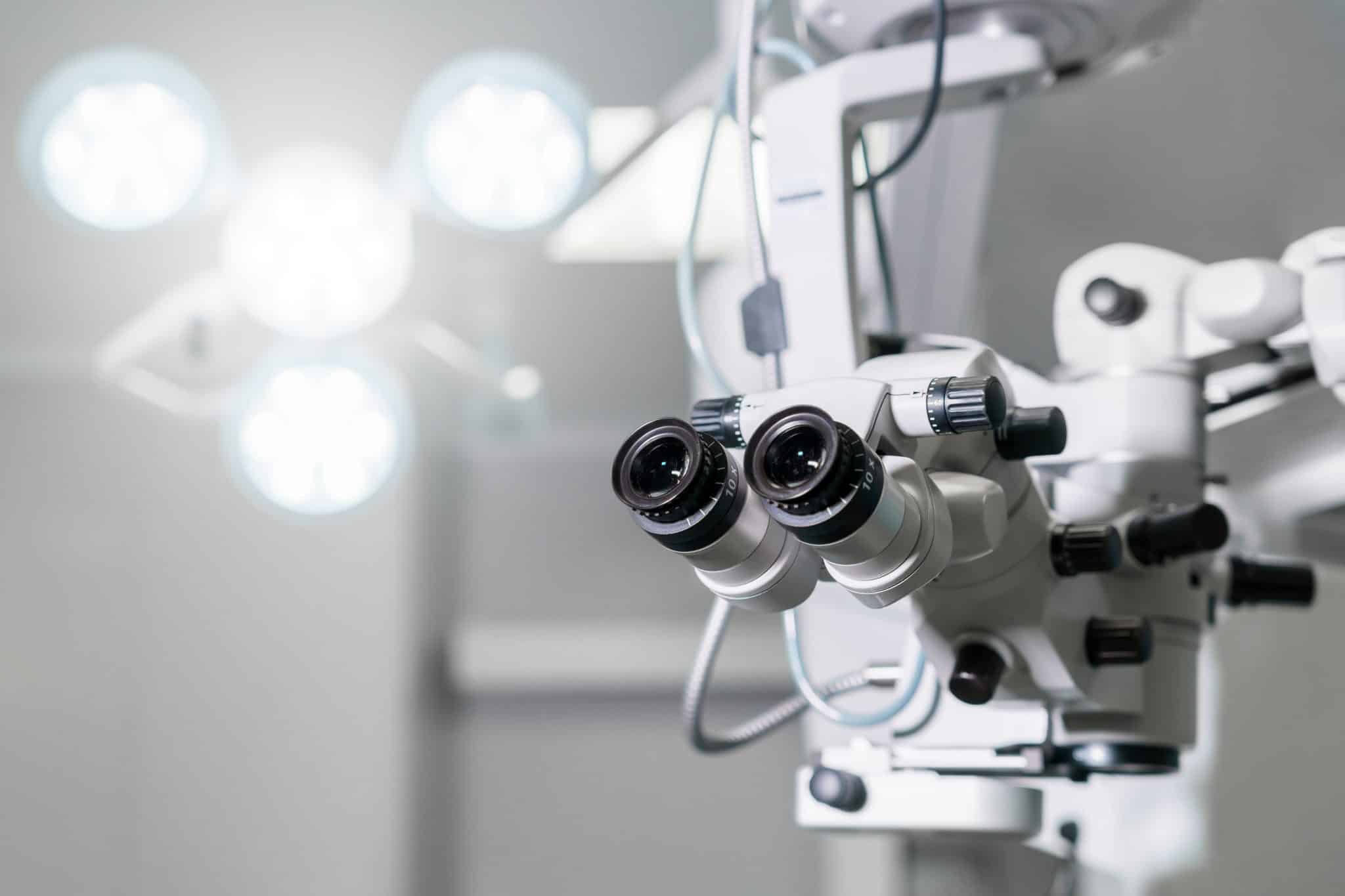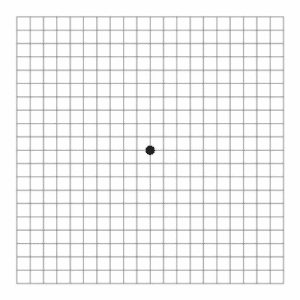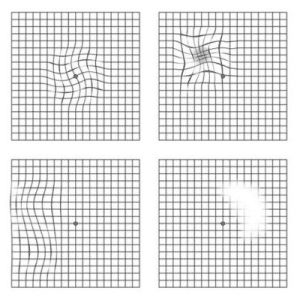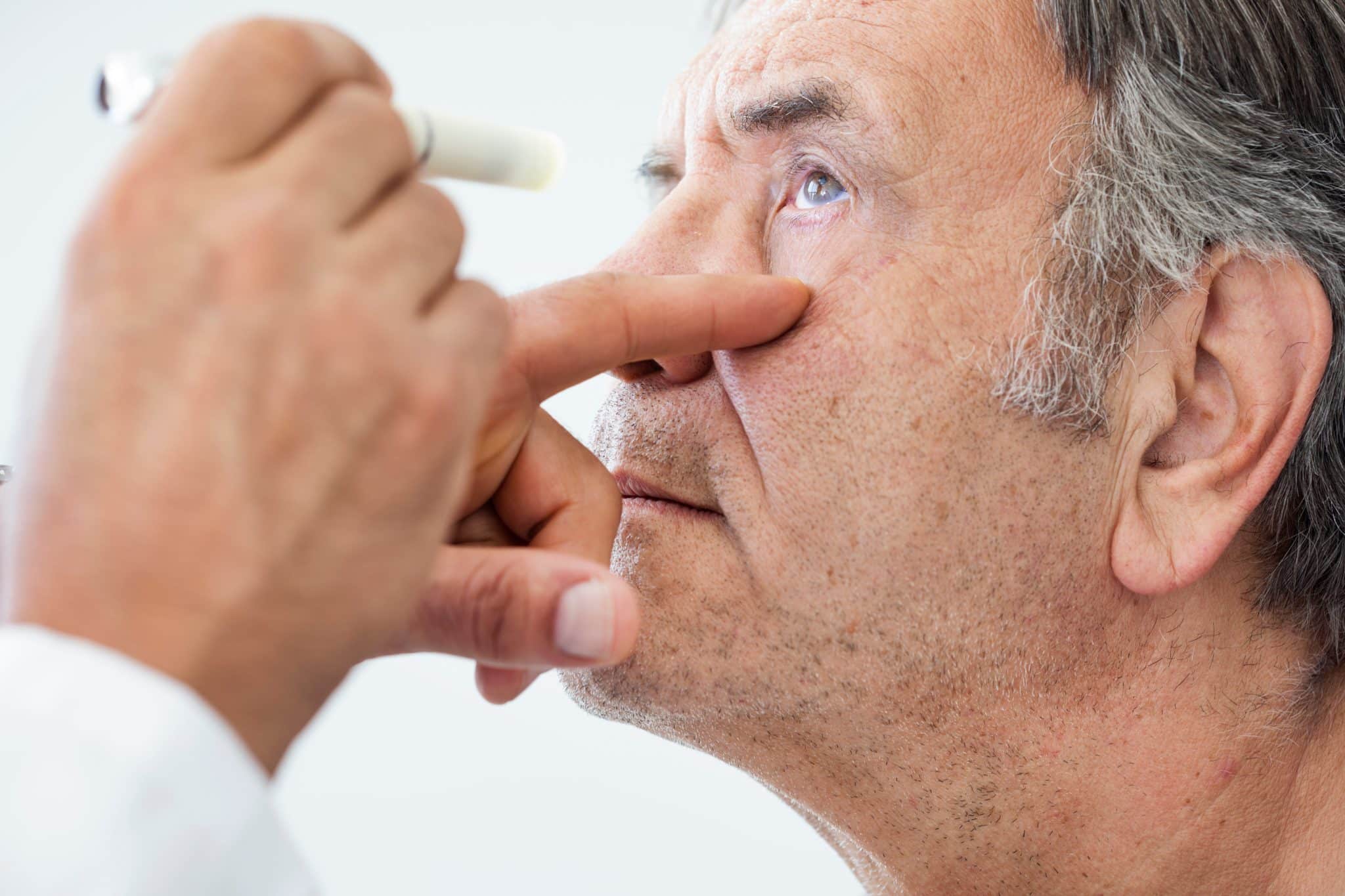Macular degeneration (AMD) primarily affects seniors, and the likelihood of developing the disease increases with age. A severe form of AMD threatens significant vision loss.
AMD (age-related macular degeneration) can cause profound visual impairment that greatly reduces the quality of life – making it impossible to read, write or recognize faces. According to estimates, up to 1.5 million people in our country suffer from macular degeneration. The disease comes in two forms – dry and wet. Our clinic offers therapies for both forms of AMD, which you can read about on this page.
Dry form of AMD
The dry form of AMD accounts for about 85-90% of all cases. It involves degeneration of the pigmented epithelial layer of the retina, causing damage to it. Druzes, or lipid-protein deposits, may appear, which can enlarge and increase in size over time. This ultimately causes patients to have defects or spots in the central visual field, which affects the quality of vision and, for example, impairs reading and performing daily activities.
Wet form of AMD
It is a chronic disorder that causes blurred vision or blind spots in the visual field. The cause of this disorder is the body’s defensive response, which results in the formation of new abnormal blood vessels (known as choroidal neovascularization or CNV).
The proliferation of abnormal blood vessels in the retina is stimulated by vascular endothelial growth factor (VEGF). Because these blood vessels are abnormal, they are also more fragile than typical blood vessels, ultimately leading to leakage of blood and protein below the macula. Bleeding, leaking and scarring from these blood vessels eventually causes irreversible damage to the photoreceptors and rapid loss of vision. Patients may see a dark spot in the center of the visual field due to blood or fluid under the macula.

What are the causes of macular degeneration (AMD)?
The primary cause of AMD is metabolic disorders in retinal cells. Free radicals, harmful molecules and chemicals cause macular degeneration. Cell death leads to permanent loss of visual acuity. The disease develops gradually, and in 40% of patients within 5 years AMD may also appear in the other eye.
The development of AMD can be influenced by:
What are the symptoms of AMD?
Symptoms develop gradually, usually in one eye at first. They may not be immediately noticeable because the well-sighted eye masks the deterioration of vision in the other eye.
In all forms of AMD, central vision is damaged, while peripheral vision remains intact. This results in the so-called. telescope vision
Typical symptoms of AMD include:
Diagnosis of age-related macular degeneration
The Amsler test, used since 1945, is used for the initial diagnosis of age-related macular degeneration. The method was developed by Swiss ophthalmologist Marc Amsler.
The Amsler test is a grid of horizontal and vertical lines used to monitor the patient’s central visual field. It is a simple, easy and quick diagnostic test that helps detect vision disorders caused by changes in the retina, especially the macula, as well as the optic nerve and visual pathway.
The test is performed with close-up glasses, looking with each eye separately at the small dot in the center of the grid. All lines are observed – whether they are straight, symmetrical, or wavy. In AMD the lines ripple, break, some lines may be missing, a spot in the center may be present.
Early signs of vision loss due to AMD include shaded areas in the center of vision, blurred or distorted vision, some lines may be wavy or blurred.


Prognosis in AMD
The prognosis for patients with macular degeneration (AMD) depends on the type (dry or wet) and severity of the disease.
For the dry form of AMD, a highly effective laser therapy is available, while for the wet form, treatment consists of intravitreal injections with a therapeutic agent.
If symptoms develop, it is worth acting quickly and going to an ophthalmologist for diagnosis and good therapy, as the disease progresses if left untreated, and in 10-15% of patients with dry macular degeneration it progresses to wet form.
Treatment of the dry form of AMD
Laser 2RT – inhibition of the dry form of AMD
The 2RT laser treatment is the only salvation for those suffering from the dry form of AMD. It is safe, quick and painless and takes only a few minutes.
The 2RT (Retinal Rejuvenation Therapy) laser treatment is an innovative method of inhibiting the progression of the dry form of macular degeneration. It is designed to “rejuvenate” the cells of the retina.
To date, therapies for dry AMD have primarily involved treating the late stages of the disease. In contrast, 2RT (retinal rejuvenation) laser therapy makes it possible to intervene earlier and slow down the degeneration process. You can read more about this treatment here.
It is advisable to opt for such a procedure in the early stages of degenerative disease, since vision is only one and should last us a lifetime. The timing of the procedure is also important – the disease should not be allowed to progress to a more advanced wet form.
Treatment of the wet form of AMD
The only treatment option for advanced wet form of AMD is to administer a series of intraocular injections with a therapeutic agent to inhibit further development of the disease and slow the process of vision loss.
You can read more about intravitreal injections for the treatment of exudative AMD here.
Are you interested in this treatment?
At our clinic, experienced specialists take an individual approach to each patient. You are welcome to schedule a consultation.


